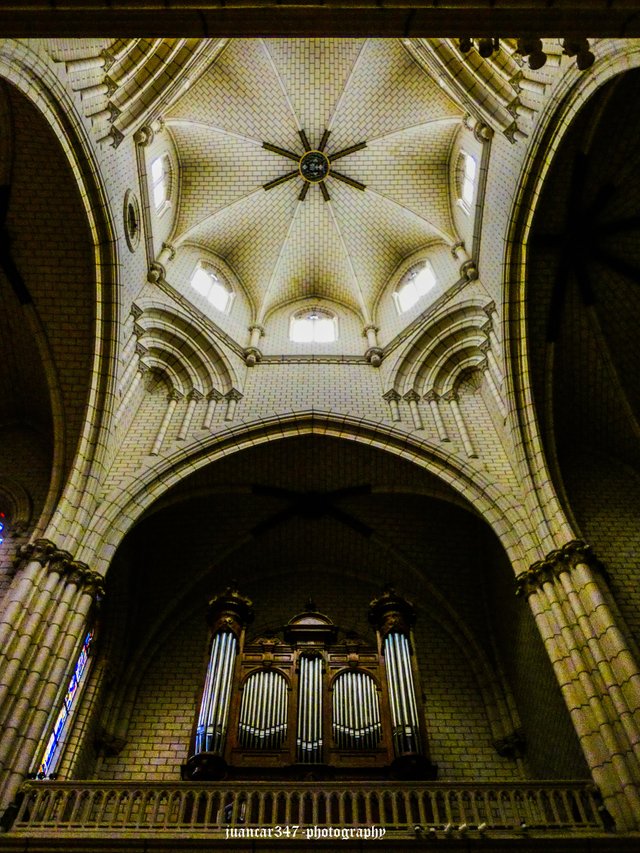[ENG-SPN] A surprising place in Madrid / Un lugar sorprendente de Madrid
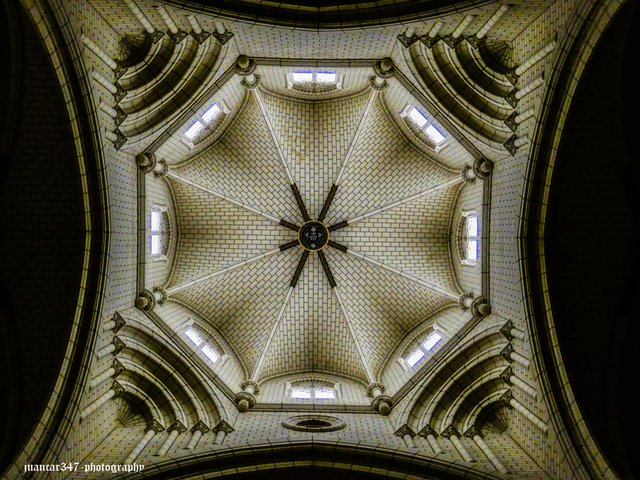
Surely, it is not an exaggeration to suppose that we owe, in large part, to the French architect, Violet le Duc, the sponsorship of some classic styles of European Architecture, who, welcoming the participation of an enthusiastic public, brought some styles out of ostracism, the Romanesque and the Gothic, which seemed hopelessly condemned to oblivion. This happened in a period of history, located at the end of the 19th century and the beginning of the 20th century, in which in Spain and more specifically, in Madrid, the neo-Romanesque and the neo-Gothic began to re-emerge with renewed hope.
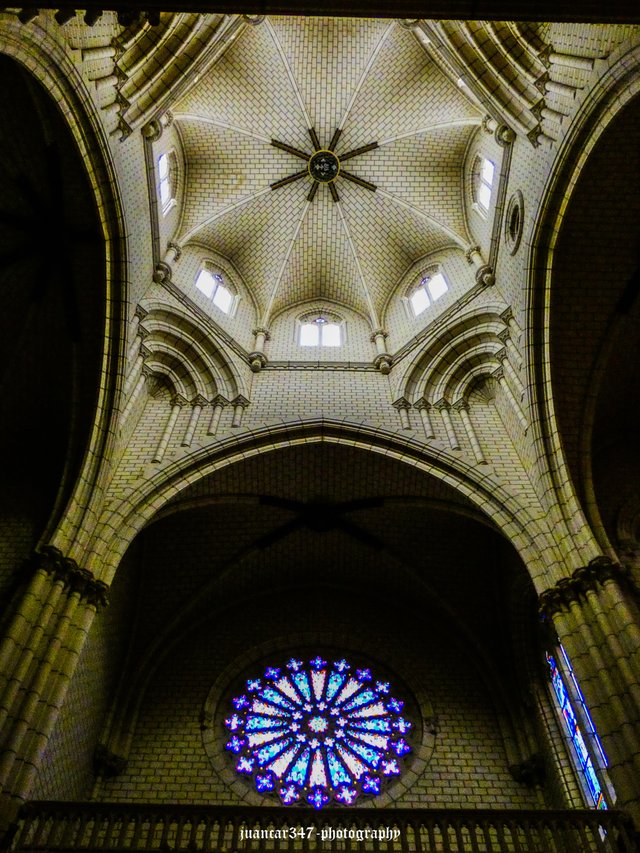
Precisely, one of the most harmonious, disconcerting and at the same time, notable exhibitor of this fortunate recovery temples, being, however, and incomprehensibly, also one of the most unknown, is located on the media-friendly Atocha street, very close to the Plaza Mayor, occupying a site, whose previous temple, as happened in the time of Sabatini and the works of the Royal Palace, seemed to be haunted, due to the countless and disastrous incidents that converged on it. But leaving aside the fascination that any black legend associated with the supernatural can produce, the truth is that this temple of the Holy Cross is admirable in essence, with a sovereign and spectacular dome, which, internally, reproduces an eight-point star. points - symbolic representation of the infinite and the eternal - and an organ, which, although not as spectacular as that of the Almudena cathedral, is capable, like that, of reproducing those musical notes, which are true algorithms of the symphony of a universal score, which, for example, the brilliant film director, Steven Spielberg, knew how to exploit as an ineffable method of extraterrestrial communication.
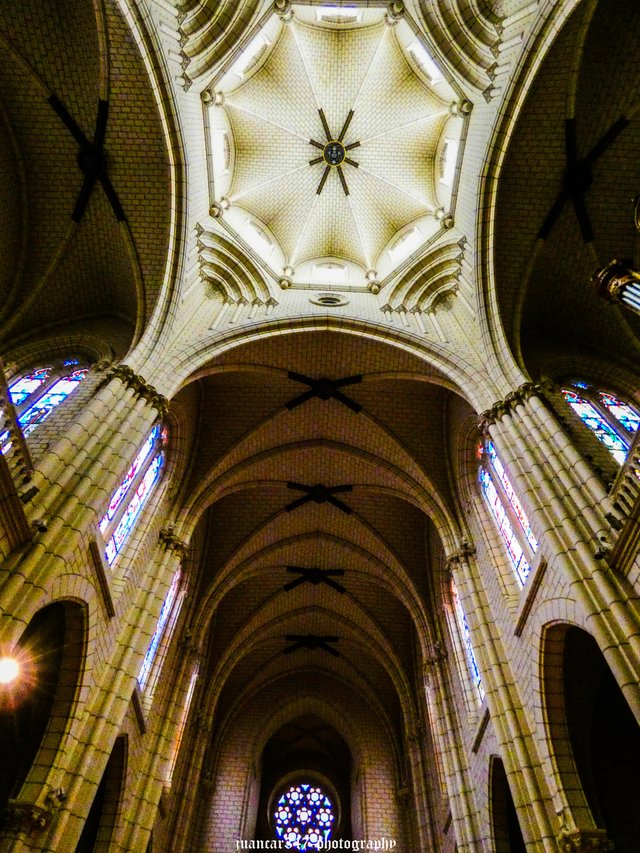
Seguramente, no sea una exageración suponer que debemos, en gran parte, al arquitecto francés, Violet le Duc, el apadrinamiento de unos estilos clásicos de la Arquitectura europea, que, acogiendo la participación de un público entusiasta, sacó del ostracismo a unos estilos, el románico y el gótico, que parecían irremisiblemente condenados al olvido. Sucedía esto, en un periodo de la Historia, situado a finales del siglo XIX y principios del siglo XX, en el que en España y más concretamente, en Madrid, lo neorrománico y lo neogótico, comenzaron a resurgir con renovadas esperanzas.
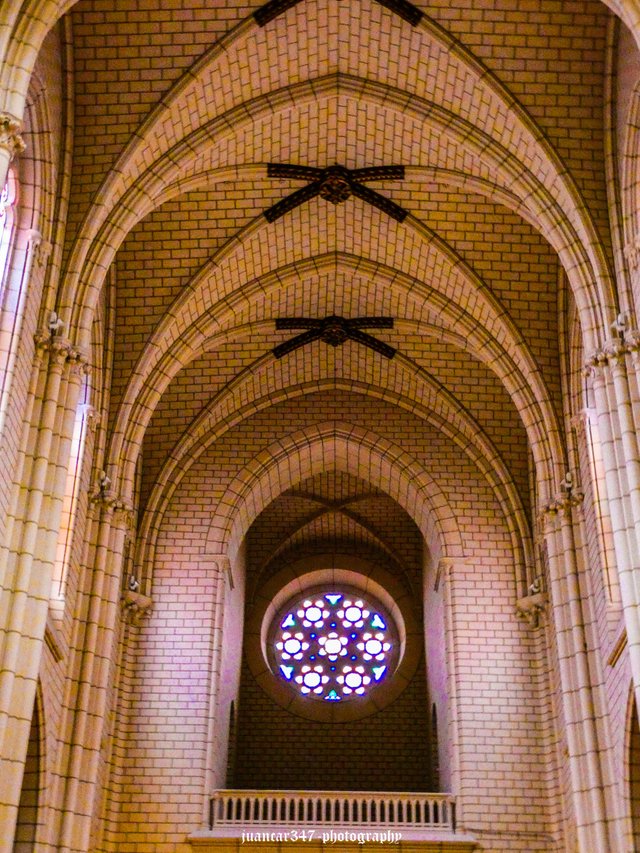
Precisamente, uno de los templos más armónicos, desconcertantes y a la vez, notable expositor de esta afortunada recuperación, siendo, no obstante, e incomprensiblemente, también uno de los más desconocidos, se localiza en la mediática calle de Atocha, muy cerca de la Plaza Mayor, ocupando un solar, cuyo templo anterior, como sucediera en época de Sabatini y las obras del Palacio Real, parecía estar embrujado, por las incontables y nefastas incidencias que en él convergían. Pero dejando a un lado la fascinación que nos pueda producir toda leyenda negra asociada con lo sobrenatural, lo cierto es que este templo de la Santa Cruz es admirable en esencia, con un soberano y espectacular cimborrio, que, interiormente, reproduce una estrella de ocho puntas -representación simbólica de lo infinito y lo eterno- y un órgano, que, aunque no tan espectacular como el de la catedral de la Almudena, es capaz, como aquél, de reproducir esas notabas musicales, que son verdaderos algoritmos de la sinfonía de una partitura universal, que bien supo explotar, por ejemplo, el genial director cinematográfico, Steven Spielberg, como método inefable de comunicación extraterrestre.
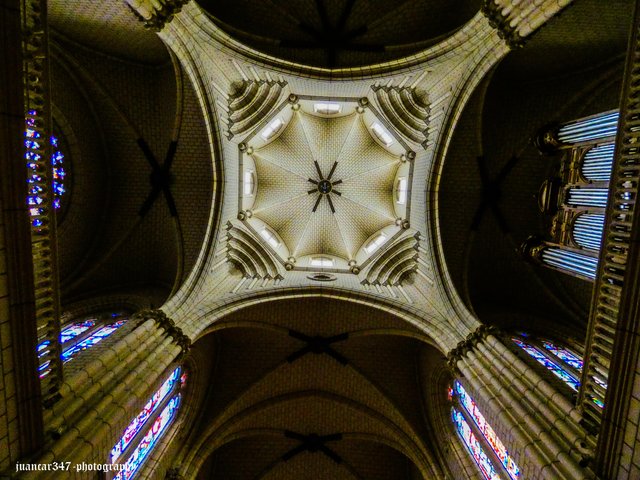
NOTICE: Both the text and the accompanying photographs are my exclusive intellectual property and are therefore subject to my Copyright.
AVISO: Tanto el texto, como las fotografías que lo acompañan, son de mi exclusiva propiedad intelectual y por lo tanto, están sujetos a mis Derechos de Autor.
